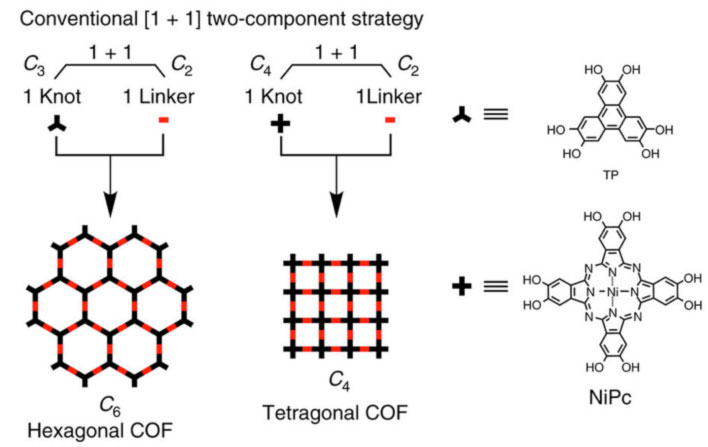Research Abstract
多成分共有結合性有機構造体
Multiple-component covalent organic frameworks
2016年7月27日 Nature Communications 7 : 12325 doi: 10.1038/ncomms12325

共有結合性有機構造体は、分子ビルディングブロックを組み立てて周期構造を形成した結晶性多孔高分子の一種であり、通常、1種類のノットと1種類のリンカーからなる2成分[1+1]縮合系を用いて合成される。今回我々は、多成分からなる[1+2]縮合系や[1+3]縮合系に基づく一般的な戦略について報告する。こうした縮合系では、1種類のノットと2または3種類のリンカーユニットの使用により、六角形配列や四角形配列の多成分共有結合性有機構造体の合成が可能になる。2成分系と異なり、多成分共有結合性有機構造体の特徴は、有機ユニットが非対称に配列することによって異方性骨格や特異な形状の細孔が形成されることである。今回の戦略は、骨格や細孔の構造的複雑さの幅を広げるばかりでなく、構造的多様性も大幅に拡大する。また、今回の合成プラットフォームは、多成分電子ドナー-アクセプター系にも広く適用可能であり、従来の[1+1]系の単純な足し合わせではない電子的特性をもたらす。
Corresponding Author
Covalent organic frameworks are a class of crystalline porous polymers that integrate molecular building blocks into periodic structures and are usually synthesized using two-component [1+1] condensation systems comprised of one knot and one linker. Here we report a general strategy based on multiple-component [1+2] and [1+3] condensation systems that enable the use of one knot and two or three linker units for the synthesis of hexagonal and tetragonal multiple-component covalent organic frameworks. Unlike two-component systems, multiple-component covalent organic frameworks feature asymmetric tiling of organic units into anisotropic skeletons and unusually shaped pores. This strategy not only expands the structural complexity of skeletons and pores but also greatly enhances their structural diversity. This synthetic platform is also widely applicable to multiple-component electron donor–acceptor systems, which lead to electronic properties that are not simply linear summations of those of the conventional [1+1] counterparts.

